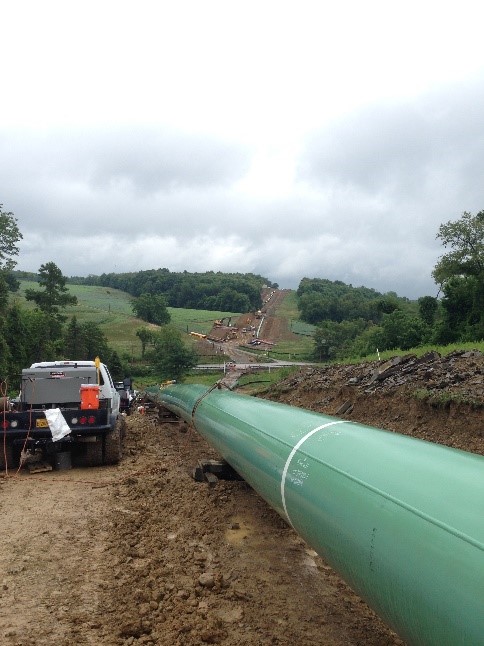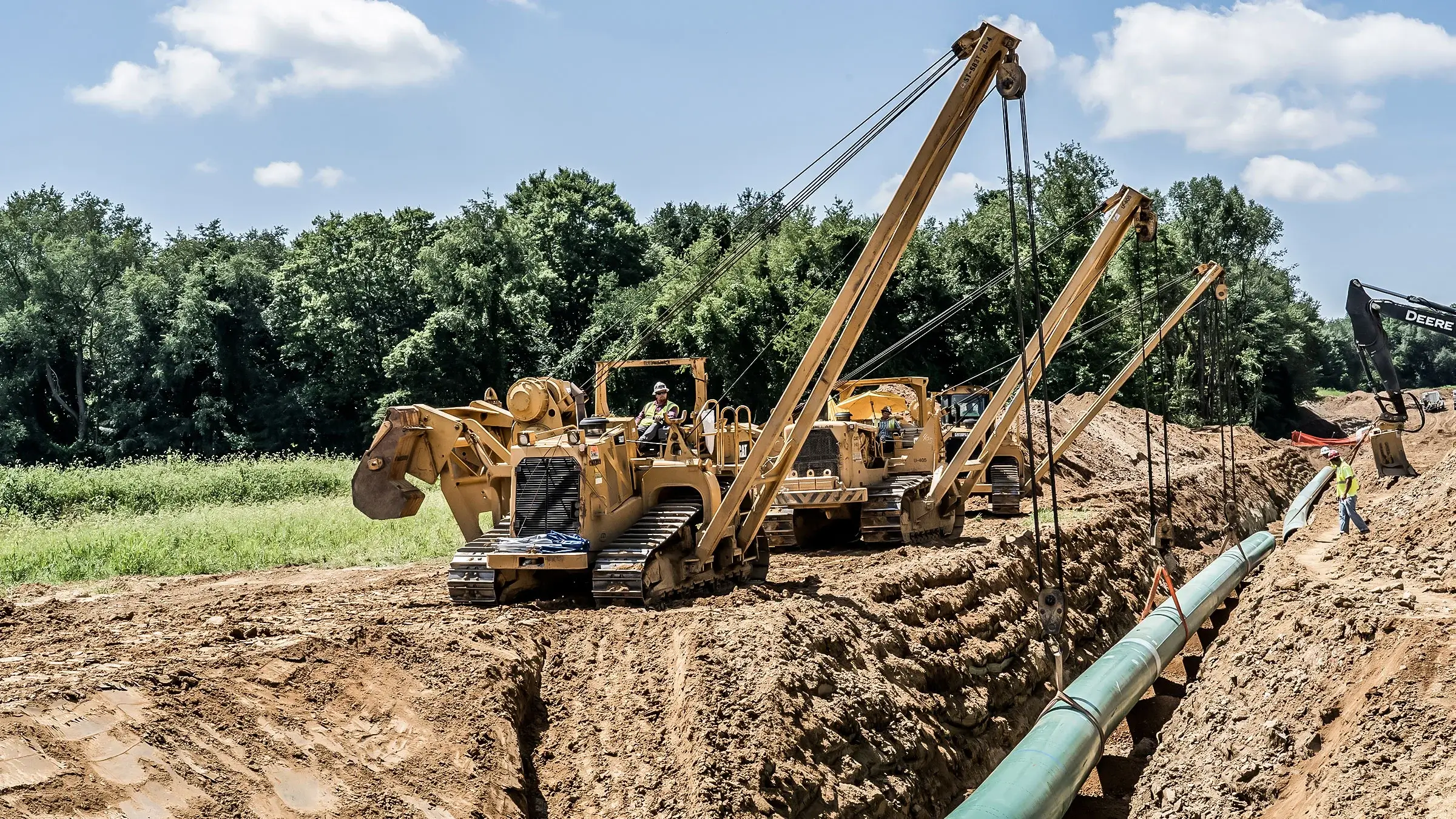What Sets Creek Pipe Midland Stands Out for Texas Installations
The Value of Pipeline Construction: Exploring the Solutions Supplied in the Industry
Pipeline construction is a critical part of modern-day infrastructure. It helps with the transportation of vital sources like oil, gas, and water. The industry includes different solutions, consisting of planning, website prep work, and installation. Each phase needs accuracy and adherence to safety and security requirements. As areas rely on these systems for their incomes, comprehending the ins and outs of pipe construction reveals its importance and prospective challenges. What variables influence the success of these jobs?
Summary of Pipeline Construction Services
Pipeline construction solutions incorporate a variety of specific tasks developed to facilitate the installation of pipelines for transferring numerous substances, consisting of oil, gas, and water. These services normally include website preparation, excavation, setup of pipeline segments, and backfilling. Proficient labor and innovative devices are fundamental for assuring each stage is executed with precision and safety.Safety protocols are paramount, as these tasks typically entail collaborating with unsafe materials and in difficult atmospheres. Quality assurance procedures establish that the pipelines satisfy sector requirements and guidelines. Furthermore, the services may entail trenchless innovation, which minimizes surface area disruption.Environmental considerations play a significant function in pipe construction, needing evaluations and mitigations to protect surrounding ecological communities. In general, pipe construction services are vital for developing the facilities essential for power and water distribution, sustaining both financial development and social needs.
Preparation and Style in Pipeline Projects
Efficient planning and layout are important elements of effective pipe jobs, making certain that all elements are carefully attended to prior to construction begins. This phase includes thorough expediency research studies that evaluate the technical, economic, and environmental variables influencing the job. Engineers and designers team up to produce in-depth strategies that outline the pipe route, materials, and construction methods, lining up with governing demands and sector standards.Advanced software and modeling methods are typically used to mimic numerous circumstances, optimizing the style for performance and security. Environmental influence assessments are performed to reduce prospective damage to ecosystems and neighborhoods, reflecting a commitment to lasting methods. Additionally, stakeholder interaction is crucial, promoting interaction and attending to issues from affected events. Eventually, efficient planning and layout established the foundation for a pipe task, minimizing threats and making certain a structured construction process, eventually adding to the total success of the operation.
Site Prep Work and Excavation
Complete site preparation and excavation are important action in the pipe construction process. This phase involves a comprehensive assessment of the land where the pipe will certainly be set up. Project groups perform surveys to recognize soil kinds, topography, and existing energy lines to guarantee a secure and effective excavation. Proper site prep work decreases ecological effect and helps with smoother construction operations.Excavation complies with, where heavy machinery is employed to eliminate soil and rock, producing a trench that meets the defined depth and size for the pipeline. This procedure must abide by safety and security regulations and environmental guidelines to avoid damage to surrounding ecosystems.Additionally, erosion control actions are executed to maintain the website throughout and after excavation. Effective site prep work and excavation add greatly to the general success of pipe jobs, laying a strong foundation for the succeeding stages of construction.
Pipeline Installation Techniques
Pipeline installation strategies are crucial for the successful execution of framework projects. Two famous techniques consist of trenchless technology, which decreases surface area disturbance, and the open-cut excavation procedure, known for its straightforward technique. Each method provides distinctive advantages and factors to consider relying on task requirements and ecological factors.
Trenchless Technology Techniques
While conventional methods of pipeline setup usually include comprehensive excavation, trenchless modern technology techniques provide an extra effective and environmentally pleasant choice. These cutting-edge strategies, such as horizontal directional drilling and pipeline bursting, decrease surface interruption by enabling the installation of pipes without substantial excavating. This not just decreases the environmental impact but likewise considerably minimizes labor and restoration expenses. Trenchless approaches help with the installment of pipelines in metropolitan locations where typical excavation would be not practical or destructive to existing framework. In addition, these strategies can fit numerous dirt types and conditions, making them functional services for pipe construction. Ultimately, trenchless innovation represents a significant improvement in the pipeline sector, promoting sustainability and functional performance.

Open-Cut Excavation Refine
Open-cut excavation remains an essential strategy in pipe setup, characterized by the direct excavation of a trench to lay pipes. This approach involves eliminating dirt and other products to create a trench of sufficient depth and size, allowing for the placement of pipelines at the needed quality. Open-cut excavation is commonly preferred for its cost-effectiveness and simpleness, specifically in locations with steady dirt conditions. It can disrupt surface area activities and calls for mindful preparation to handle web traffic and ecological influences. Safety actions have to be carried out to secure employees and nearby facilities during the excavation process. Overall, while open-cut excavation may not be appropriate for all terrains, it stays an extensively utilized method in pipe construction.
Evaluating and Quality Guarantee
Evaluating and high quality assurance are vital components in pipeline construction, ensuring that installations fulfill recognized safety and security criteria and performance needs. Various assessment techniques and methods are employed to examine material high quality and adherence to regulatory compliance. This systematic method helps determine potential issues prior to they rise, securing the honesty of the pipe system.

Evaluation Techniques and Approaches
Examination techniques and techniques are important components in ensuring the stability and safety of pipe construction. Various methods, including visual examinations, ultrasonic screening, and radiographic exams, are used to discover defects and validate top quality. Visual evaluations enable the recognition of surface anomalies, while ultrasonic testing makes use of sound waves to assess wall thickness and find flaws inside. Radiographic evaluations entail X-rays or gamma rays to generate pictures of the pipe's framework, disclosing surprise problems. Additionally, stress screening is carried out to review the pipeline's stability under operational problems. These approaches collectively add to a comprehensive understanding of the pipe's problem, making it possible for prompt upkeep decisions and ensuring conformity with market standards. Reliable evaluation is crucial for stopping failings and promoting lasting functional security.
Security Specifications Compliance
Guaranteeing conformity with safety criteria is vital in pipeline construction, as it straight impacts the task's total top quality and integrity. Abiding by established regulations and guidelines warranties that construction techniques reduce threats related to pipe installation and procedure. Creek Pipe reviews. Extensive testing methods, consisting of non-destructive testing and pressure assessments, are important in confirming that pipelines can visit site stand up to the functional stresses they will come across. Quality control procedures are additionally essential, as they develop a structure for regular surveillance and evaluation throughout the construction process. By focusing on security criteria compliance, firms not only secure employees and the environment yet additionally improve the integrity of the pipeline, ultimately resulting in long-term operational success and public rely on the facilities
Product Quality Evaluation
Product quality evaluation plays a substantial duty in the total integrity of pipe construction. This procedure includes strenuous testing and top quality assurance steps to ensure that products fulfill sector requirements and requirements. Numerous examinations, including tensile strength, corrosion resistance, and weld honesty assessments, are performed to identify any kind of potential weak points. An extensive evaluation not just guarantees the performance of the pipe yet also improves safety and security and resilience over its life-span. In addition, carrying out quality control methods helps mitigate threats connected with product failures, which can lead to pricey repair work and ecological dangers. By focusing on worldly high quality assessment, companies can assure conformity with governing requirements while promoting confidence among stakeholders in the reliability of their pipeline systems.
Upkeep and Fixing Providers
Repair and maintenance services play a vital role in the durability and efficiency of pipe systems. These solutions encompass regular examinations, gas line install fixing, and restorative activities to deal with deterioration, leaks, and various other concerns that might arise with time. Proficient specialists make use of sophisticated modern technologies such as ultrasonic screening and wise pigging to monitor pipeline stability, making sure that any prospective issues are recognized early.Additionally, maintenance programs often consist of set up safety nets created to enhance system reliability and reduce the probability of unexpected failures. Repair solutions may involve the replacement of damaged areas, securing leakages, or using trenchless technology for marginal disturbance.
Environmental Compliance and Safety And Security Procedures
Pipeline systems not just call for ongoing maintenance and repair service to operate effectively however also should comply with rigid environmental compliance and precaution. These guidelines are vital for lessening eco-friendly impact and guaranteeing public security. Companies in the pipeline construction market carry out complete ecological analyses prior to job initiation, recognizing prospective threats to wildlife and ecosystems.Furthermore, adherence to safety and security methods safeguards workers and surrounding areas. This includes regular training on emergency situation response and spill prevention techniques.To keep conformity, industries use keeping track of modern technologies to discover leakages and various other abnormalities in real-time. Ecological management strategies are often established to lay out actions for dealing with unforeseen issues during construction.Ultimately, stringent adherence to environmental compliance and safety actions not only meets lawful responsibilities but additionally cultivates lasting practices within the industry, advertising an equilibrium between facilities advancement and environmental stewardship.
Often Asked Concerns
What Job Opportunities Are Available in Pipeline Construction?
Career possibilities in pipeline construction incorporate roles such as project supervisors, engineers, welders, and security assessors. These settings require varied skills, offering pathways for growth in a vital market of infrastructure advancement and power circulation.

How Do Pipeline Projects Effect Resident Communities?
Pipeline projects significantly affect local neighborhoods by influencing financial growth, supplying work possibilities, and enhancing framework. Nonetheless, they might also elevate problems regarding ecological effects, land usage, and potential interruptions to community cohesion and natural ecological communities.
What Modern technology Is Made Use Of in Modern Pipeline Construction?
Modern pipe construction uses advanced innovations such as GIS for mapping, drones for airborne surveys, and automated welding systems to improve efficiency, safety and security, and accuracy, eventually facilitating the reliable transportation of resources throughout numerous surfaces. Creek Pipe pipeline construction.
Just How Are Pipeline Construction Costs Estimated?
Pipeline construction prices are estimated through in-depth analyses of materials, labor, tools, and regulatory needs. Elements like terrain, project dimension, and ecological considerations additionally significantly affect the total spending plan and economic preparation for construction.
What Are the Greatest Difficulties in Pipeline Construction Projects?
The biggest difficulties in pipe construction tasks consist of regulatory compliance, ecological issues, logistical concerns, protecting funding, and taking care of labor scarcities. Each element can considerably affect timelines and budget plans, making complex the his response general implementation of the task.